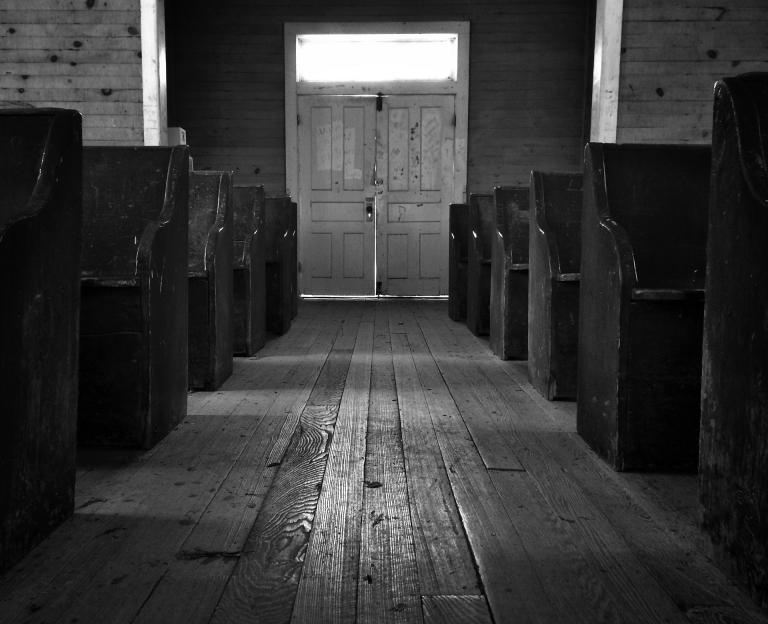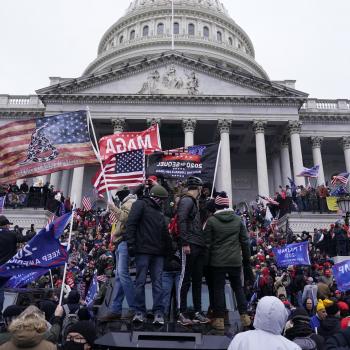“If there was an armed guard inside the temple, they would have been able to stop him.”
This was Trump’s response to the horrific synagogue shooting in Pittsburg on Saturday. If possible, this predictable sound bite is even worse than the hollow “thoughts and prayers” business that we usually hear in the wake of tragedy. This is not just an empty trope: it is victim-blaming. It’s gaslighting.
And it utterly misses the point of worship.
In the Abrahamic traditions (Judaism, Islam and Christianity), worship is a time to be connected to God and others; and to be centered in communal values—even, maybe especially, when those values are countercultural. One of the values at the heart of each of these movements—however imperfectly we might practice it—is a commitment to nonviolence.
Bringing guns into a sacred space breaks the spirit of the worship act in a fundamental way.
I’ll not speak for the Tree of Life community, or suggest what is the appropriate response for them. But I can tell you why there are no armed guards at my place of worship. The short answer is: it’s against our religion.
The longer answer, of course, is more complicated. This is an important conversation for all worshipping communities to engage right now. And believe me, we are engaging it at my church. But we still land on the side of a non-militarized sanctuary, every time.
Because “sanctuary” is the operative word.

We recognize our privilege in this regard. In the current political climate, non-white congregations and gatherings of a non-Christian nature are far more likely to be targeted. But that doesn’t diminish the threat of gun violence that has become an everyday part of life in this country. A mass shooting can happen to anyone at any time. But while we take seriously the need to make our space as safe as possible, we still reject the call to more arms as the answer. The reasons for this are both practical and theological.
For one thing, once you’ve brought more guns into the picture, chances of an accidental or bystander shooting escalate considerably. The odds of a “good guy with a gun” hurting an innocent person by mistake are far greater than the odds of an actual mass shooting. We’ve all seen that episode of The West Wing. Not on my watch.
And speaking of odds—our recent security audit revealed that any other number of accidents are more likely to happen on church property (ours or yours) than an act of violence. These are matters that, for the most part, we can easily address to make our community safer without ever bringing a weapon onto the property. (I’ll write a separate post about some of those best practices, but I don’t want to get into the weeds here.)
We’re also learning that there are other ways to ward off or diffuse a violent situation that don’t increase the risk of unintended consequences. We are exploring all of those options, and committed to ongoing learning and conversation.
It is a complicated issue. But the very idea of conceal-carry guards in the sanctuary runs counter to the nonviolent narrative at the heart of our faith.
The kind of nonviolence that Jesus taught was countercultural in his day as well. He took the laws of retributive justice and turned them on end. “You’ve heard it said, an eye for an eye… But I say to you …” I trust you know the rest.
His philosophy did not sit well with the governing powers of his own day, either. In fact, they eventually killed him for it.
Go figure.
Jesus instructed his followers to be agents of peace, and to not meet force with force. But he was not suggesting they be passive in the face of the world’s violence. He was an advocate for creative resistance. He never asked them to take a punch and come back for more; he asked them to use whatever means they had to take control of the situation in some other way. A Third Way. He asked them to change the narrative. He asked them to live by the laws of love rather than fear—and trust that such a love could transform the violent reality in which they were living.
When we gather for worship in fearful times, our purpose is not to contribute to the violence and the brutality of the world, or even to answer it in kind. Rather, we come to hear the voice of Christ above the chaos. The voice that calmed the waters, and called out demons, calls us too—to find another way forward. To take a step closer to the kingdom, and not one step more deeply into this world’s call to arms.
We are not naive. Love alone can’t stop a bullet. But love can change the narrative. Love is how we change the racist, nationalist rhetoric this administration employs so casually for ratings. Love—along with courage, wisdom and faith—is what we need to transform the way of the world. Not more guns.
There are plenty of guns. What we need is sanctuary.












